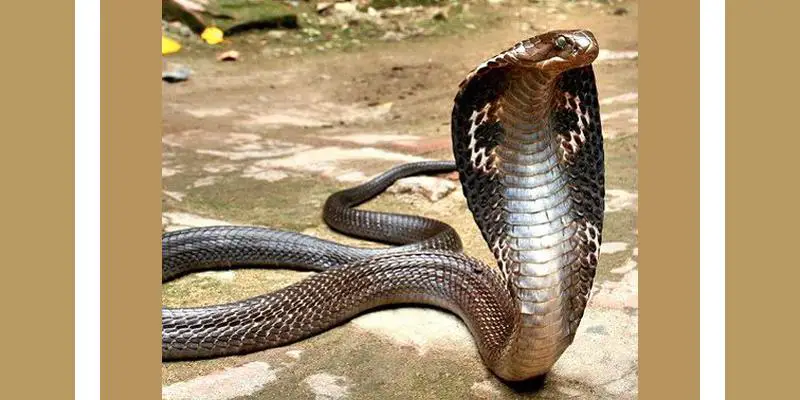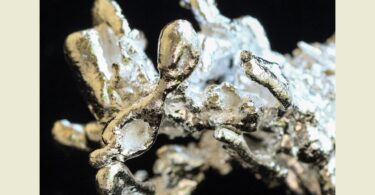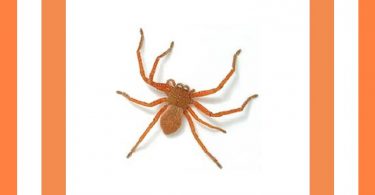Naja (prepared from the venom of the Indian cobra) has qualities common to other snake remedies – loquacity, wandering, attractive talk, malice, venom, jealousy, the feeling of two wills, etc. Its unique feature however is its feeling of duty consciousness.
In my observation, Naja people have a certain quality of nobility about them, of morality, of responsibility. Often this feeling is in conflict with the feeling of having suffered wrong and neglect, with intense feelings of malice and impulse to neglect or harm the offending person.
This emotional state is reflected in the following dream that one of the provers had. The prover, a woman, dreamt that she was staying as a paying guest in the house of an old woman. Once, around midnight, the latter asked the prover to vacate her room immediately, without giving her any reason or explanation.
In fact, she started to pick up the prover’s belongings and throw them down the stairs, almost pushing her out in the middle of the night. In doing so, she tumbled down the flight of stairs and broke her leg. She was shouting for help.
The prover was then in a conflict between her duty and responsibility as a doctor which prompted her to go to the aid of her landlady, and her impulse to neglect her and make her suffer for the wrong that she had done to her. She woke up from this dream, feeling this “split” in her mind.
The cobra in India is both revered and respected as a God, as well as feared and killed as a poisonous snake. I have found that Naja people often threaten to strike, but don’t do it unless provoked to the extreme. This is rather like the behaviour of a cobra who raises its hood when approached, but doesn’t do anything if only passed by without being disturbed.
Another feature that I have seen in Naja people is a brooding and suicidal state, a feeling as if everything had been done wrong and could not be rectified. This could happen in many situations, where there is a split between the feeling of duty and the feeling of having suffered wrong.
An example of such a situation could be that of a daughter-in-law and a tyrannical mother-in-law, or even of a woman whose husband is having an extra marital affair.
In both situations the feeling is often one of being neglected and wronged, with much anger and malice, but at the same time she may feel dutiful and responsible, and there is a constant conflict about this. This can eventually lead her into a depressive state with suicidal thoughts and impulses.
Among the symptoms found repeatedly in the provers and patients are:
- Dreams of snakes, especially of black snakes, with raised hoods
(unaccompanied by fear).
- In life, an intense fear of or fascination with snakes. They often refer to
snakes as if talking of humans.
- Dreams, of being pursued.
- Dreams, of flying in order to escape.
- Symptoms are often left-sided.
- The patients are often chilly and cannot tolerate cold air or draught.
- The feeling of suffocation from tight clothes is similar to Lachesis and
to other snake remedies.
- The physical appearance of the face can often be like a cobra hood. The
glasses that are worn may sometimes resemble the spectacle mark of
the cobra.
- In one or two patients, I have noted a tendency to play with fire.
- Also one may find an intense spiritual orientation in Naja patients.
- Clairvoyance.
- Often Naja patients have affections of the heart valves.
Rubrics:
- Delusion, troubles, broods over imaginary.
- Sadness, wrong way, as if having done everything, in a.
- Sadness, suicidal disposition, with.
- Suicidal disposition, axe, with an.
- Delusion, injured, is being, head.
- Delusion, injured, is being, surroundings, by his.
- Delusion, neglected, he is.
- Delusion, superhuman control, is under.
- Will: two wills, feels as if he had.
- Will, loss of.
- Wrong, everything seems.
- Delusion, has suffered wrong.
Phatak:
- Complaints brood over imaginary.
If you would like to learn more about Dr. Sankaran’s work, courses and lectures please visit: http://www.onlinehmp.com
To read about the philosophical approach to developing these remedy pictures, see Dr. Sankaran’s introduction to Soul of Remedies:





